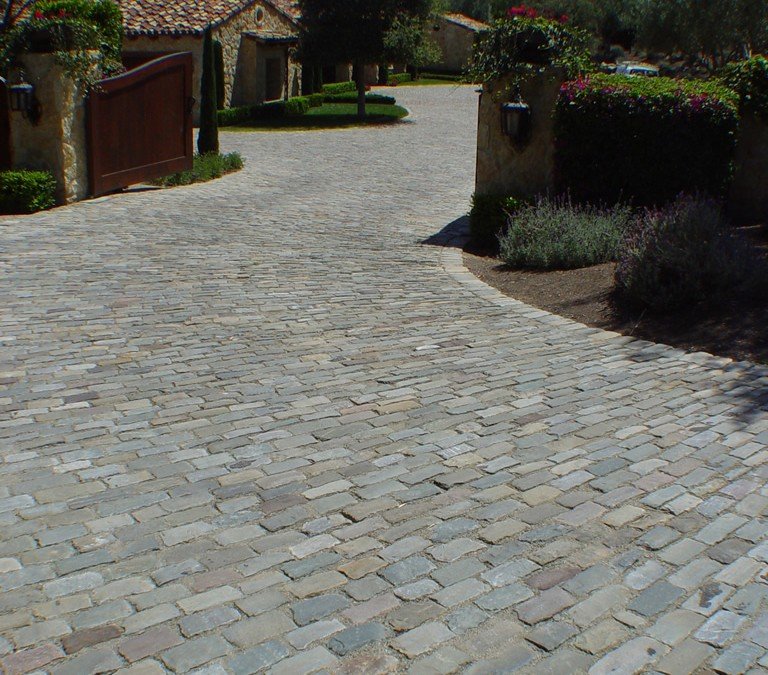THE DIFFERENCE BETWEEN GRANITE AND SANDSTONE COBBLESTONE?
We’re often asked about the difference between Historic European Cobblestone’s antique “granite” and antique “sandstone” cobblestone. Both types of cobblestone are authentic reclaimed and antique (100-400 year old) and have all of the character, charm and the authentic worn patina found only by virtue of its historic age.
Both cobblestones have tremendous size options. They are available in SIX sizes (3″-4″, 5″x5″, 6″x6″, 7″x7″, 4″x7″, 5″x8″). Both can be sawn – reduced to as thin as 1.5″ to 2” for a thin antique paver appropriate for installation on a concrete base. Click here for a pdf size chart.
Granite and Sandstone cobblestone are extremely hard and dense, appropriate for all freeze/thaw conditions. These cobbles have already withstood the elements for hundreds of years!
THE TWO MAIN DIFFERENCES: COLOR AND SURFACE TEXTURE.
Some quarries in Europe produce an extremely hard sandstone with unique characteristics. This is an extremely tight-grained stone, as hard and durable as granite that has been used for centuries as street paving and for buildings. Antique sandstone cobblestone has a more level foot-friendly surface, which makes it a great choice for walkways and patios as well as driveways and motor courts. The unique natural color range is earthier, including warm grays and a higher percentage of browns and tans.
Historic European granite cobblestone is known for a beautiful color range in mostly warm grays, with gray-greens and some rust. The surface appearance of antique granite cobblestone is full of character and ranges from slightly uneven to relatively flat.
A gorgeous variety of authentic antique reclaimed granite and sandstone cobblestone can be found in our project photo gallery and by visiting either Monarch Stone International or Historic European Cobblestone websites. Monarch Stone International is the leading source of authentic cobblestone and curb for beautiful homes and commercial projects across the U.S.A.

